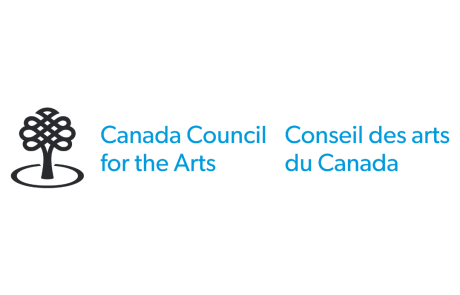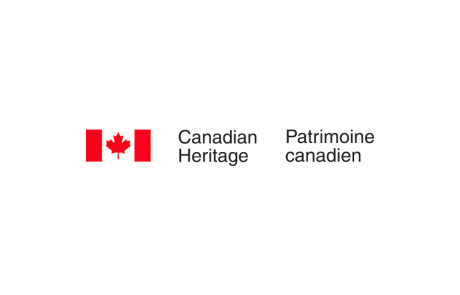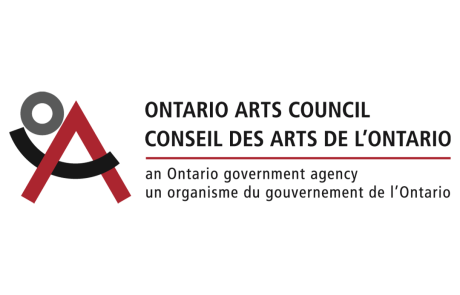Candice Hopkins’ Top Ten
by Candice Hopkins
This Top Ten list was initially compiled for the Banff International Curatorial Institute symposium: entitled Trade Secrets Education/Collection/History that took place between November 12 and November 14, 2008. Each of the participants presented their current research in the form of a “Top Ten list.” The list is associated with magazines like Art Forum where a host of highly regarded critics, curators and artists make number their most influential artworks, exhibitions, films, music, books, they encountered over the past year. Not surprisingly, the most illuminating choices are nearly always from artists. Other magazines take it to other extremes; Flash Art, considering things as they do from a more global perspective, even does a Top 100.
The following is my list, as I saw it in mid-November, 2008:
My Top Ten includes work by a number of Inuit artists and collectives, in part, because these things are immensely interesting, but also because of a recent event unfolding in the Arctic involving Russia and Canada and soon a host of other international players.
Presently there is a slow race taking place of different signifiers (Russia with aflag and Canada with the recent decision to build six naval patrol vessels) in the northern hemisphere. It concerns Arctic sovereignty and the re-definition of borders that is taking place as a result of the opening of the north to “realize it’s full potential;” its “full potential” implying further resource extraction and the imminent opening up of year-round international shipping routes via the Northwest Passage due to the rapid melting of the arctic ice.
This past summer Russian explorers planted their country’s flag on the seabed 4,200m (14,000ft) below the North Pole to further their claims to the Arctic. The rust-proof titanium metal flag was brought by explorers travelling in two mini-submarines in what is believed to be the first expedition of its kind. Segei Balyaskikov, speaking on behalf of the Russian Arctic and Antarctic Institute is quoted in media stating that, “It’s a very important move for Russia to demonstrate its potential in the Arctic… It’s like putting a flag on the Moon.” The region underneath (and on top of) the flag is not officially a part of any single country’s territory but is governed instead by complex international agreements.
The planting of this flag brings up a host of questions regarding how territories are mapped, identified and understood, and how this mapping has shifted from the surface of land – topographical maps – to an even greater horizontal exploration to encompass sea beds and underwater borders. What may seem like a localized event is in fact an international issue, an issue that has a significant impact on ideas of nationalism, its relationship to geography, and in turn colonialism.
The first few artists on this list are rethinking representations of the Arctic in film and video, the internet and on paper.
1.Before Tomorrow, a feature length film co-produced by Arnait productions and Isuma Productions.
Watch the making of Before Tomorrow
Filmed between July 2006 and January 2007, Before Tomorrow was directed by Marie-Hélène Cousineau and Madeline Ivalu and adapted from a novel by Danish writer Jørn Riel. The project is the first feature from the Arnait Video Production, a collective based in Igloolik who has been making videos since 1991. Arnait’s productions have focused on the stories of Inuit women and are a study on cultural authenticity and community involvement.
Like Isuma Productions‘ Atanarjuat: The Fast Runner, this film promises to irrevocably change the way Inuit culture is understood and represented now.
Before Tomorrow poignantly addresses the direct impacts of colonization in the north and takes place circa 1840 at a time when many Inuit communities have heard of, but have yet to encounter, white men. In the film, one event changes everything, upon the return of two people to camp they find that “everyone is dead, their bodies twisted in pain and covered with blisters. Beside their bloated corpses, [there are] objects known to belong to the white foreigners… a steel needle, a tin cup.”
2. The drawings of Pudlo Pudlat:
Images of Pudlo’s works can be found at the following link: http://closeencounters.
Born in 1916, Pudlo Pudlat died in Cape Dorset in 1992. His drawings are both a documentation of the incommensurability that occurs when two different cultures meet, but they also represent a site of resistance: within them is a place where animals have taken over the world, birds are as big as boats, and where sharks pull sleds. Pudlo Pudlat renders a world where the tables are turned on technology and it is the animals who call the shots.
3. Isuma T.V.
From Isuma Productions, Isuma T.V. is a portal for indigenous filmmakers initiated by Isuma productions in Igloolik, Nunavut. The website can be accessed and streamed at www.isuma.tv.
4. Walrus Magazine
Walrus is a Canadian Magazine started in 2003. In a time when journalism in North America is increasingly compromised, I think that Walrus is offering something else. Coincidentally they also have some of the better art writing in Canada. In their words, “We are committed to publishing the best work by the best writers from Canada and elsewhere on a wide range of topics for readers who are curious about the world.”
5. Two books by architect Eyal Weizman:
a) Rafi Segal and Eyal Weizman: A Civilian Occupation.
Censored last year by the Association of Israeli Architects, A Civilian Occupation is the first attempt by Israeli architects, scholars, journalists, and photographers to highlight the role of Israeli architecture in the Middle East conflict.
As the authors write, “We were trying to break out the reasons for why the forms are the way they are and reflect from that backwards on the whole ethics of architecture in Israel.”
b) Hollow Land: Israel’s Architecture of Occupation, edited by Eyal Weizman.
A study in late-modern colonial occupation, this book shows how a military urbanism based on walling, layering, and burrowing, has reconfigured political space in Israel. The book brings forward the direct involvement that architecture and planning have had in violating international humanitarian law.
To quote Weizman:
Peace technicians—the people who are always drawing new maps for a solution—arrive at completely insane proposals for solving the problem of international boundaries in three dimensions. And when you have Jewish enclaves in Palestinian territory, you have to build either tunnels or bridges that connect them to each other. Both typologies were experimented with and proposed throughout negotiations. The most obvious is the proposed safe passage between the West Bank and Gaza that has a Palestinian road with Palestinian sovereignty that goes over Israel’s sovereign territory—with the international boundary being the thermodynamic joint between the column and the road. We get into incredibly bizarre and dystopian solutions.
Jerusalem itself, according to the Clinton plan, would have had 64 kilometers of walls and 40 bridges and tunnels connecting the enclaves to each other. Imagine an urban environment that operates like that. It would make L.A.’s highway system look flat. This is the total collapse of the idea of territory as produced by maps. Nationalism and mapmaking were always bound together. You had a map and you drew a boundary. But what you see in the West Bank is that sovereign relations are attempting to play themselves out three- dimensionally. And that is obviously an unworkable absurdity.
6. The Aboriginal Tent Embassy in Canberra Australia:
In 1972 in Canberra Australia, Aboriginal Australians erected a tent embassy outside of the Federal Parliament House in the Australian Capital Territory in an attempt to highlight their then position as foreigners in their own lands. The Embassy now stands as a temporary monument of sorts to the Australian Aboriginal rights movement. An embassy is generally understood to be a diplomatic station for ambassadors in a foreign land; in this instance the tent embassy provides a space for dissent—as a form of nomadic resistance.
Although the Parliament has changed locations, the Embassy endures temporarily to today and is listed in the Register of Australia’s National Estate as an official cultural heritage site.
7. Museums by Artists, published by Art Metropole, 1983.
Museums by Artists is a book edited by AA Bronson and Peggy Gale. A significant precursor to the perhaps better-known 1999 exhibition, Museum as Muse curated by Kynaston McShine at the Museum of Modern Art in New York, this book is a reminder of the importance of considering new and unexpected exhibition models and sites and contexts for exhibitions. It is very often artists who imagine what these exhibition spaces can be, their potentialities, and also to think critically about what they are.
8. Jimmie Durham: Poles to Mark the Center of the World
This is a series of sculptures, the first of which were initiated in the early 1990s. I like to think of them as a proposal for a way to live in the world. They emphasize the importance of continually changing the frame of reference for understanding your relationship with that world.
Since moving to Europe in 1994, Jimmie Durham’s practice has been against architecture (and with that monuments, single dead-end narratives, the weight of history). In 1995, shortly after making the trip over from Mexico, he began to create a work carving a series of poles that would each mark of “The Centre of the World.” He made the first one for Brussels, a city the artist described as trying to be the economic and political centre of Europe. Shortly thereafter he made one for Siberia. In relation to this work he wrote: “I decided that every continent has seven centres. This is an arbitrary decision – maybe there are eight, maybe there are nine – it doesn’t matter. And every village also has seven centres. For every continent I would make a staff of the seven centres.”
A centre then is a consensual fiction: it does not exist on its own; rather it is created, and sustained, by the very belief that it exists. The same could be said for peripheries. Understood in the context of his larger art practice Poles to Mark the Centre of the World is one of many projects set at destabilizing the foundations of architecture and its meanings. With regards to this he writes:
I don’t feel that I live in Europe, I feel that I live in the continent called Eurasia, which is an unknowably large continent. That’s what I like about it, but it’s heavy with art history at the same time. And it has a history of Joseph Beuys deciding that he was a personal bridge between the East and the West, between Siberia and Europe for example. A romantic old idea of the artist as hero, and the artist could solve the problems by heroic gesture. But I like Joseph Beuys all the same…
9. Power Transposition Spell by The Center for Tactical Magic
I am currently co-editing a book, together with Marisa Jahn and Berin Golonu, entitled Recipes for an Encounter (Western Front, 2009). In it we are publishing a work by the San Francisco-based Center for Tactical Magic. It’s a power transposition spell in thirteen simple steps. The full spell can be accessed here:www.tacticalmagic.org/CTM/thoughts/graf%20spell.htm Following in some senses, a William Burroughs cut up and the sometimes generative act of radically changing the physicality of a text to alter its meaning, the recipes book ends with instruction on how to make the book into a bomb. The bomb is a generative, not destructive act, a means to implode the text and create any infinite number of more textual encounters.
10. Michael Taussig:
The final author on this list offers another perspective on magic and power and how these are used in relation to colonialism. The first book is a study on how mimesis is radically embedded in alterity.
a) Mimesis and Alterity: A Particular History of the Senses (1993)
Taussig states that the purpose of this text is to examine, “the politics of epistemic murk and the fiction of the real, in the creation of Indians, in the role of the myth and magic in colonial violence as much as in its healing, and in the way that healing can mobilize terror in order to subvert it . . . through the tripping up of power in its own disorderliness. ….That is why my subject is not the truth of being but the social being of truth, not whether facts are real but what the politics of their interpretation and representation are.” (xiii).
I think that the difference between “the truth of being” and the “social bring of truth” is a vital in understanding the relationship between understandings of being indigenous and representation.
b) Shamanism, Colonialism, and the Wild Man: A Study in Terror and Healing (1987)
Again, to quote Taussig whose words provide an excellent synopsis: “So it has been through the sweep of colonial history where the colonizers provided the colonized with the left – handed gift of the image of the wild man – a gift whose powers the colonizers would be blind to, were it not for the reciprocation of the colonized, bringing together in the dialogical imagination of colonization an image that wrests from civilization its demonic power.”
 Candice Hopkins is a citizen of Carcross/Tagish First Nation and lives in Red Hook, New York. Her writing and curatorial practice explore the intersections of history, contemporary art, and Indigeneity. She is Executive Director of Forge Project, Taghkanic, NY, and Senior Curator for the 2019 and 2022 editions of the Toronto Biennial of Art. She was part of the curatorial team for the Canadian Pavilion at the fifty-eighth Venice Biennale, featuring the work of the media art collective Isuma; and co-curator of notable exhibitions including the national traveling survey Art for New Understanding: Native Voices, 1950s to Now; SITElines.2018: Casa Tomada, SITE Santa Fe; documenta 14, Athens and Kassel; and Sakahàn: International Indigenous Art, National Gallery of Canada, Ottawa. Notable essays include “The Gilded Gaze: Wealth and Economies on the Colonial Frontier,” in the documenta 14 Reader; “Outlawed Social Life,” in South as a State of Mind; and “The Appropriation Debates (or The Gallows of History),” in Saturation: Race, Art, and the Circulation of Value (New Museum/MIT Press, 2020).
Candice Hopkins is a citizen of Carcross/Tagish First Nation and lives in Red Hook, New York. Her writing and curatorial practice explore the intersections of history, contemporary art, and Indigeneity. She is Executive Director of Forge Project, Taghkanic, NY, and Senior Curator for the 2019 and 2022 editions of the Toronto Biennial of Art. She was part of the curatorial team for the Canadian Pavilion at the fifty-eighth Venice Biennale, featuring the work of the media art collective Isuma; and co-curator of notable exhibitions including the national traveling survey Art for New Understanding: Native Voices, 1950s to Now; SITElines.2018: Casa Tomada, SITE Santa Fe; documenta 14, Athens and Kassel; and Sakahàn: International Indigenous Art, National Gallery of Canada, Ottawa. Notable essays include “The Gilded Gaze: Wealth and Economies on the Colonial Frontier,” in the documenta 14 Reader; “Outlawed Social Life,” in South as a State of Mind; and “The Appropriation Debates (or The Gallows of History),” in Saturation: Race, Art, and the Circulation of Value (New Museum/MIT Press, 2020).










